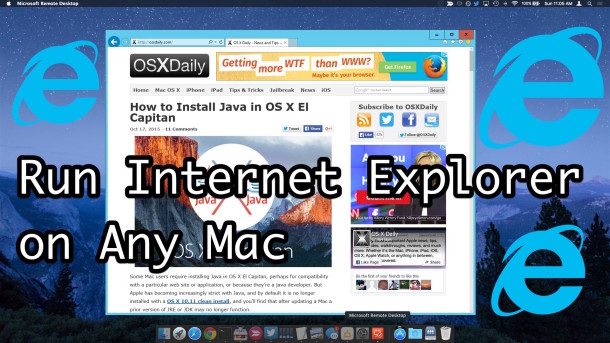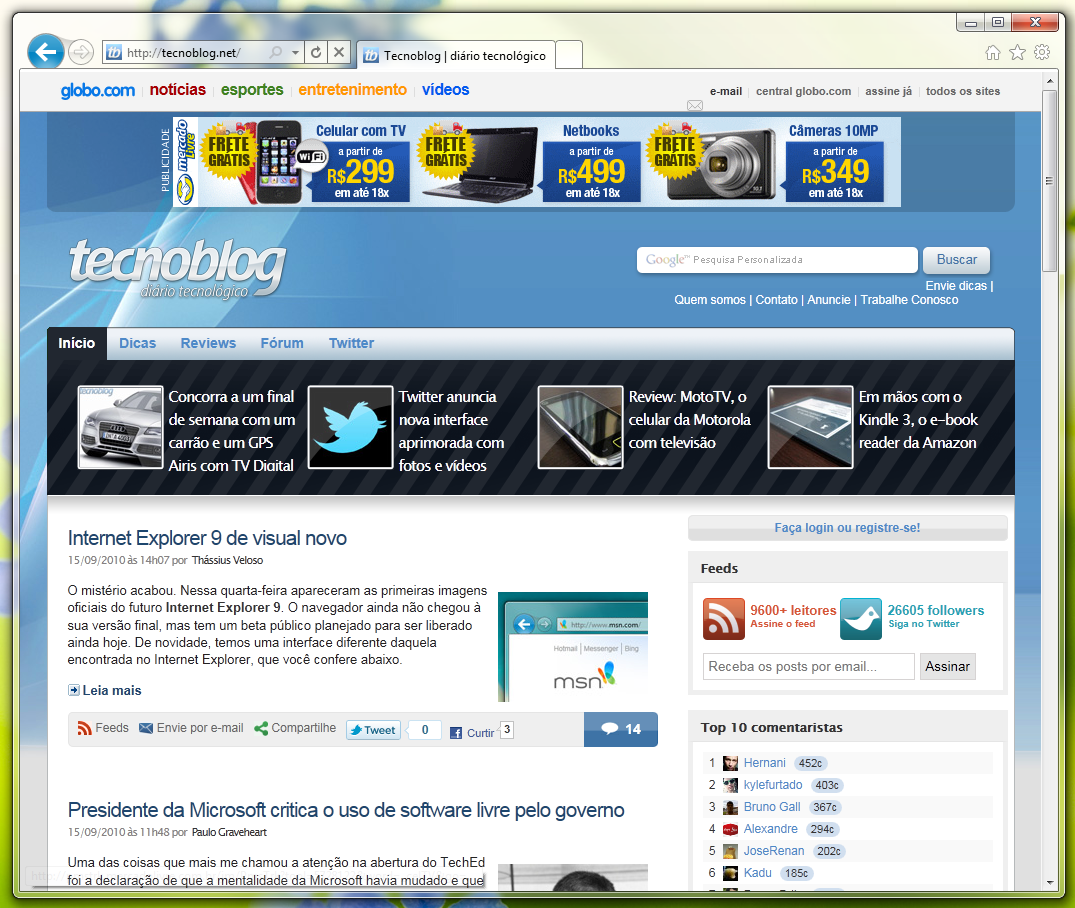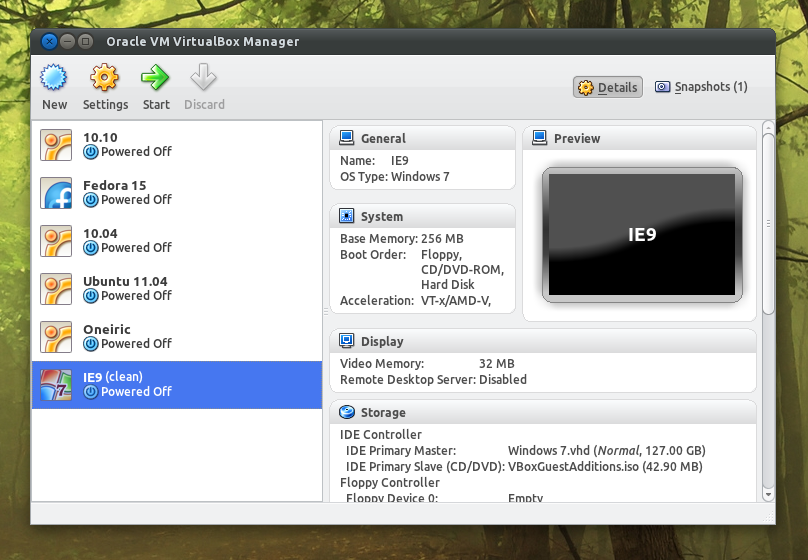- Download Internet Explorer 9 For Mac Os X
- Macbook Internet Explorer
- Internet Explorer Browser Mac
- Internet Explorer 9 For Mac Os X Download Free
- Internet Explorer For Macbook Air
Get all best apps via Setapp
If you’ve just recently switched from PC to Mac, you’ve probably noticed that instead of Internet Explorer or Edge that you’re used to, Mac has its own proprietary browser called Safari. In fact if you try searching for “download Internet Explorer for Mac” you’ll quickly realize that the exact IE equivalent on Mac doesn’t exist. What do you do then?
For those with MacOS 9, it is a fairly safe assumption that most have Microsoft Internet Explorer 5, as it was the default browser when the operating system was current. MSIE 5 for the Mac isn't the worst browser ever released, and it supports some CSS for 'modern' website designs. However, the Windows 10 maker ceased the development of IE for Mac in 2003, not long after Apple released the Safari browser with the release of Mac OS X 10.3. Alternatives to Internet Explorer.

Interestingly, at the dawn of the world wide web in the late 90s, Internet Explorer was the default browser on all Macs. But when Apple introduced Safari as the new default browser in 2003, Microsoft has decided to discontinue the development of IE for Mac shortly after. So unless you run Mac OS X 10.6 or earlier (why would you?), there is no way to directly install Internet Explorer on Mac. And you definitely shouldn’t use the Internet Explorer versions from pre-2003 right now.
Windows apps alternatives for Mac?
Say no more. Here’s a curated collection of apps for any job available with Setapp.
How To Use Internet Explorer on Mac
Although natively launching Internet Explorer on Mac isn’t possible, there are other ways to simulate IE for Mac experience. You could mask Safari as different versions of Internet Explorer or Microsoft Edge, you could also install a virtual machine and launch IE for Mac that way, or you could simply choose to use any other third-party browser available on macOS.
Simulate Internet Explorer on Mac with Safari
Most of the time, if you need to use Internet Explorer on Mac, it’s probably for testing purposes, to see how certain websites or web apps perform, or to access websites that require you to use IE (yes, those still exist).
Both of those use cases could be easily performed by Safari. To use Internet Explorer with Safari, you just need to turn on developer tools:
- In Safari, go to Preferences > Advanced
- Check “Show Develop menu in menu bar”
Now you can access developer tools directly from Safari, which let you inspect websites, empty caches, and most importantly simulate a variety of other browsers right through the Safari app. To use Microsoft Edge or Internet Explorer on Mac:
- Go to the Develop menu in Safari’s menu bar
- Navigate to User Agent and select the browser you’re looking for, whether it’s Microsoft Edge, any of the Internet Explorer versions, Google Chrome, Firefox, etc.
- The website you’re on will be automatically refreshed to reflect the browser of your choice. Just don’t forget to switch back!
The User Agent option in Safari should cover nearly all reasons for using Internet Explorer on Mac. However, if you do absolutely need to launch Internet Explorer itself for one reason or another, you could also try doing it with the help of a virtual machine.
Launch Internet Explorer on a virtual machine
While using a virtual machine for Internet Explorer is not by any means an easy solution, it’s still there for anyone who needs it. What virtual machine essentially does is installing a full-scale copy of Windows on your Mac and letting you launch it as an app inside the macOS. From there you can launch Internet Explorer or, in fact, any program you miss from your Windows days.
To set up virtual machine, first you need to buy a copy of some virtual machine software (VMware Fusion is a good one) and a license for Windows. Once you have those in place:
- Download both VMware fusion and the Windows ISO file
- Launch VMware Fusion
- In the Installation Method window, choose “Create a new custom virtual machine”
- Drag and drop your Windows ISO file onto the dialogue window
- Click Finish
- Relaunch the virtual machine and click the play button to setup Windows
Now every time you need to use Internet Explorer on Mac, you can just launch the virtual machine and use IE directly with Windows that way. There are certainly a few downsides to this solution. First, you have to purchase both VMware Fusion and a licensed copy of Windows for the sole purpose of using Internet Explorer. Second, virtual machines tend to be quite heavy on your processor, as they are running the whole operating system inside them.
Another option available to you in case you don’t specifically need to use IE for Mac but rather move away from Safari is to switch to any other third-party browser, all of which are freely available on macOS.
Use third-party browsers on Mac
Download Internet Explorer 9 For Mac Os X
If Safari is not your first browser of choice and using Internet Explorer for Mac is at the very least quite complicated, you can download any other stable and widely used browser out there and make it the default one on your macOS.
Google Chrome
By far the most dominant browser of today, Google Chrome currently commands 45–65% browser market share. Developed by Google, the browser is available on both desktop and mobile devices, and thus boasts a significant amount of plugins and web apps that are exclusive to it. Chrome has also been praised for its speed and tight integration with all other Google products. As for the downsides, using Chrome means being subjected to Google’s pervading tracking and helping Google to effectively monopolize the web.
Firefox
Firefox is another great everyday browser. Heir to the first commercial web browser called Netscape, it’s an open-source program owned by the not-for-profit Mozilla Foundation. Firefox is fast, secure, and boasts a supportive community around the world. All of this makes it a great alternative to Safari and Internet Explorer.
Brave
Brave is a newcomer to the browser arena that first appear only in 2015. Based on the open-source Chromium project (as is Google Chrome), the browser quickly gained a loyal following due to its aggressive privacy controls and ad blocking. Turning Brave into your default browser might seem a bit experimental at this point, but it nevertheless presents a good option for anyone concerned with privacy.
Microsoft Edge
Although not available on macOS as of early 2019, Microsoft has announced that it’s currently rewriting the Edge browser engine to run on Chromium (like Google Chrome and Brave), which means it will become compatible with macOS too upon release. Fingers crossed, but in the meantime you can choose one of the alternative browsers listed above.
Overall, these are your three options of running Internet Explorer on Mac. You can use Safari’s User Agent to view any webpage just as Internet Explorer would, launch the actual Internet Explorer browser through a virtual machine running Windows, or choose one of the alternative browsers if all you want to do is get away from Safari on Mac.
However, if you’re new to Mac, a browser might not be the only thing you’re concerned about. You also need to find apps to cover all kinds of issues related to optimization, organization, security, and productivity.
Essential apps for all new Mac owners
As soon as you switch from PC to Mac, you realize that sadly not all apps you loved and used daily are available on macOS. So naturally you need to find suitable replacements. The good news is Mac has an abundance of great apps for everything you need. But how do you choose and decide which ones are worth your time?
That’s where a platform like Setapp becomes indispensable. Setapp is a collection of more than 150 essential apps and utilities for Mac that cover all possible use cases and scenarios. All apps in the collection are automatically updated to their latest versions and new apps are added regularly. It’s a godsend for new and seasoned Mac users alike. Discover new apps that are the best at what they do? What’s not to like?
Try all these apps for free
Get around browser restrictions to enjoy your web journey with useful apps for Mac users
Here is an essential introductory set of some of the apps featured on Setapp that every new Mac users should have.
Bartender
A lightweight utility performing a vital role, Bartender keeps your menu bar clean and tidy. As you use your Mac more and more, every new app would want to be featured in your menu bar (top-right corner). This quickly becomes unsustainable, and instead of a quick access to the apps you need, you’ll spend more time just trying to find the right one.

Mac’s default organization settings for menu bar are quite basic, only allowing you to reshuffle icons. Bartender lets you hide them under a single icon and feature just those you need to use right at the moment.
Ulysses

Lauded as the best writing tool for years, Ulysses features a clean interface and lets you focus on the writing process, whether it’s for simple notes, speeches, or anything in between. And the app’s Markdown support makes it much more web friendly, allowing direct exports to WordPress and Medium.
Disk Drill
No one ever wants to lose their files, no matter whether it’s due to physical damage or accidental deletion. Disk Drill solves that problem by essentially insuring and giving you the option to recover your files. As the most widely used data recovery tool around, Disk Drill helps you back your files on a regular basis and save lost files from damaged hard drives if things ever go south.
Macbook Internet Explorer
CleanMyMac X
The ultimate Mac optimization app, CleanMyMac X keeps your Mac free of any junk, safely and completely uninstalls old apps, and protects you from being affected by malware. Just launch CleanMyMac X once a month to do a complete scan of your computer and you’ll ensure your Mac’s top condition.
Internet Explorer Browser Mac

Best of all, Bartender, Ulysses, Disk Drill, CleanMyMac X, and all other apps featured on Setapp are available to you on a free trial. Just launch Setapp and try out as many apps as you want, turning your transition to Mac from a chore to a pleasurable discovery.
Meantime, prepare for all the awesome things you can do with Setapp.
Read onSign Up

Internet Explorer 9 For Mac Os X Download Free
This detailed guide will take you every step of the way through installing Internet Explorer 9 on your Mac – using nothing but free software.
Important: There are a couple of things you should know before you undertake this (quite easy, albeit lengthy) endeavor. You will require approximately 26GB (yes, gigabytes) of free space in order to install IE 9 using the method outlined below. Once the installation is complete, you’ll be able to delete all of the files required for the set up, but you’ll still be using approximately 13GB of disk space to run IE 9.
Internet Explorer For Macbook Air
The installation involves downloading 13+GB of data – so you may want to run the initial download overnight, depending on the speed of your Internet connection.
It’s also worth mentioning that while there are other methods to install Internet Explorer on your Mac, this is the only one that I have found to consistently run IE 9 correctly (no crashing, no problems rendering web pages etc). If the above requirements don’t scare you off, here are the steps to install IE 9 on your Mac.
- The first thing you’ll need to do is install VirtualBox, if you don’t have it installed on your Mac already. Head over to the VirtualBox download page and download VirtualBox for OS X. The installation is very straight forward – run the installer package and click ‘Next’ a bunch of times. Once completed, don’t open VirtualBox, just proceed to the next step.
- Open up a Terminal by navigating to Applications ->Utilities ->Terminal. From the prompt, enter the following command:
curl -s https://raw.github.com/xdissent/ievms/master/ievms.sh | IEVMS_VERSIONS=”9″ bash
and hit Enter.
- This is where you’ll want to take a long break. Your Mac is now downloading approximately 13GB of data.
- You can check on the status once in a while but it’s about as entertaining as watching paint dry.
- After the download has finished, the files will be processed.
- When you see Done! in the Terminal window and are returned to the command prompt, you’re finished with the time consuming part. Leave the Terminal window open – we’ll be using it later to delete the unnecessary files.
- Now open VirtualBox from your Applications folder. If you’re prompted to download an update, click the Download button. If you’re not, skip down to step #14.
- Again, click the Download button.
- Now click the Install button.
- If prompted, click Upgrade.
- Scroll all the way to the bottom of the VirtualBox License window (the I Agree button won’t be ‘clickable’ until you do). Click I Agree.
- Enter your password when prompted.
- Finally, click OK.
- Select IE9 (clean) from the column on the left side of the VirtualBox window. Note: you may also see an entry titled ‘IE9 Inaccessible’ – ignore it. Now click the Settings button from the Toolbar.
- Click the System tab from the top menu. Select Motherboard from the secondary menu. Use the ‘slider’ to increase the Base Memory: level. Assuming your Mac has at least 2GB of RAM, I would suggest increasing the Base Memory to 1024MB. Your VirtualBox (IE 9) will run quite slowly if you use much less than 1024MB of memory. Click OK when you’re done.
- With IE9 (clean) still selected, click the Start button.
- VirtualBox will now explain how the Auto capture keyboard feature works. Read this message carefully. In a nutshell it amounts to this – use the left command key on your keyboard to ‘release’ your keyboard and mouse from the virtual machine (IE 9). Click OK.
- Windows will now boot.
- If a mouse pointer integration message appears, ignore it and click OK.
- Once Windows finishes setting itself up and boots, select the Administrator ‘button’. Note:NOT the “Admin” user. Use the password: Password1
Note: the password is case sensitive – the P in Password1 must be capitalized.
- Now you’ll sign into Windows.
- The Windows Activation window will appear. Click Ask me later. You’ll be presented with this screen every time you launch your IE 9 Virtual Machine – click Ask me later every time.
- You will have a complete Windows 7 working environment, including Internet Explorer 9.
- Now you can test out web sites in IE 9, access those “Internet Explorer only” sites etc.
- Bring that Terminal window back up. Enter the command:
cd .ievms
- Now enter the following commands, one at a time:
cd vhd
cd IE9
rm *.rar
rm *.exe
lsAfter entering the “ls” command, you should see two files (and only two files) – Windows 7.vhd and Windows 7.vcm.
- That will have cleared up about 13GB of hard drive space, leaving only the files required to run Windows 7 and IE 9. You can quit the Terminal now – you’re done!
